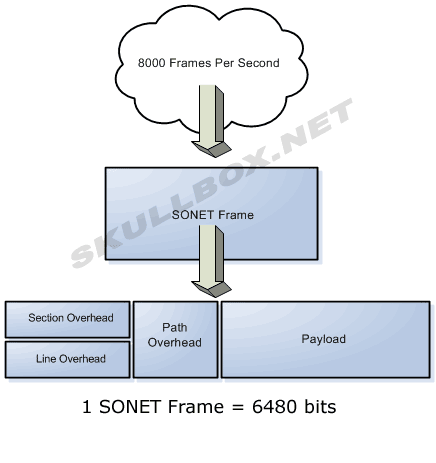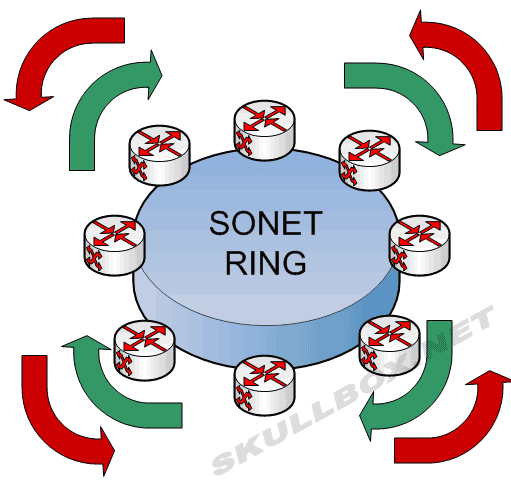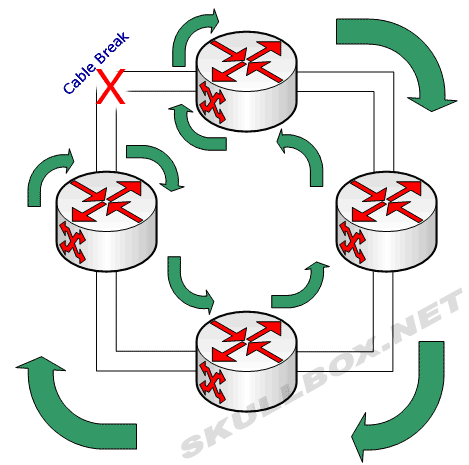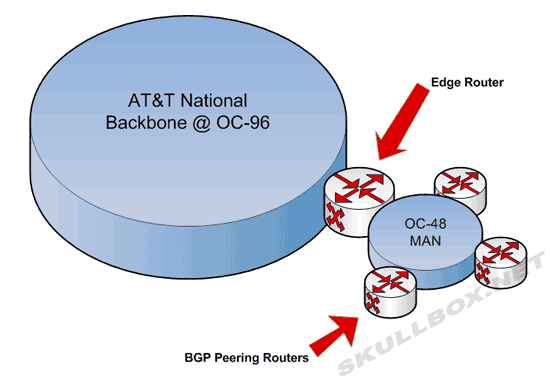
SONET Networks
By Erik Rodriguez
This article describes the operation and configuration of SONET networks. It also describes where they are used, how they are implemented, and what purpose they
serve.
What is SONET?
SONET (Synchronous Optical Network) is a standard for multiplexing data. It is used primary for backbones
composed of fiber optics. SONET performs a complicated timing and multiplexing scheme. It uses certain signaling levels called "Synchronous
Transport Signals" or STS. Each STS level corresponds to a specification of "Optical Carriers." Due to it's complexity, the equipment needed to operate a SONET
networks is extremely expensive. SONET networks powers some of the worlds most important networks (telephone and Internet). For that reason, SONET is designed to
run at 99.999% uptime. This is also known as "the 5 nines" of availability.
Optical Carriers
Optical Carriers are only used in very large networks such as Internet Backbones, Metropolitan Area Networks (MANs) ,and large
Universities. As I mentioned above, the OC specification is determined by the STS level. The STS level is the rate at which SONET can multiplex multiple sources of data to a single fiber optic line. OC specifications are measured in multiples of 3, with a base of 1. See the table below:
| STS Level |
OC Specification |
Data Rate (Mbps) |
| 1 |
OC-1 |
51.84 |
| 3 |
OC-3 |
155.52 |
| 9 |
OC-9 |
466.56 |
| 12 |
OC-12 |
622.08 |
| 18 |
OC-18 |
933.12 |
| 24 |
OC-24 |
1244.16 |
| 36 |
OC-36 |
1866.23 |
| 48 |
OC-48 |
2488.32 |
| 96 |
OC-96 |
4976.64 |
| 192 |
OC-192 |
9953.28 |
Bandwidth Breakdown
To understand how the speed (in Mbps) is accomplished, you must understand the frame structure of SONET. Each frame contains a number of control bits plus the payload. For example, STS-1 supports 8000 frames per second. Each frame is broken into 6480 bits (810 bytes). See the image below:

8000 frames/sec * 6480 bits/frame = 51,840,00 bits per second = 51.84 Mbps.
OC Usage
As I mentioned before, optical carriers are only used for extremely high speed applications. Telco companies use SONET for telephone networks and their own rings. The University of Florida is connected by multiple OC-3 links at the standard STS-3 signal yielding 155.52 Mbps. Most large universities are connected with high speed OC links because of the on-going Internet 2 project. Local telephone companies may have central offices connected with links that range from OC-3 to OC-48. While OC-48 is extremely robust connection, telco companies are using these links for a combination of voice and data. These high speed OC links help carry long-distance telephone calls and relay other high speed data connections such as DS-3 lines. Until recently, OC-192 was just a concept and was not actually used. With support from carrier-grade producers such as Cisco, Nortel, and Juniper, we are now starting to see active OC-192 links. However, they are only deployed within networks and are not actively connecting
different providers.
SONET Topology
SONET uses a variation of the ring and mesh topology. This is done because it is the most efficient way to inter-connect all the major nodes in a backbone. However, these topologies are used dynamically depending on the traffic of certain nodes. For example, The mid-west states have a somewhat simple setup with few major nodes and cross links. However, The MAEE (Metropolitan Area Exchange East) in Washington, D.C. would have a very complicated setup because of the enormous amount of traffic. Rings are used provide speed and redundancy. SONET uses the external protocol known as Border Gateway Protocol (BGP). Depending on the situation, multiple versions can be used (BGP4, EBGP, etc). Remember that BGP is only used to for WANs and is not used to route a LAN. The image below shows the basic composition of a SONET ring.

Notice the points of presence (PoP) arranged in a ring configuration. The red and green arrows represent 2 separate fiber optic paths. Two cable paths are used to
provide a backup in the event that one becomes unavailable. This method is called Automatic Protection Switching (APS). It is part of the reason for the excellent uptime provided by SONET rings. This is also referred to as "self-healing." The fiber optic cables used are very thick with a protective covering called "armor" to prevent accidental cable breaks and even from rodents chewing on it. However, in the event of an accident or natural disaster (usually an earthquake), the second cable path will automatically accept the load from the crippled line. The primary line (drawn in green) always flows in a clockwise direction. The secondary line (drawn in red) flows counter-clockwise. There are many different types of ring configurations. Others configurations can use two fiber lines simultaneously for load balancing, one line to send and the other line to receive, etc. High traffic rings may even use dozens of lines to provide a combination of the above configurations.
Redundancy
It does happen. A portion of the fiber paths in a ring become un-responsive. What happens then? This is when the ring configuration shows its valuable. The
equipment used within a SONET network is designed to create a loop to automatically repair itself. See the diagram below:

Notice the cable break in the upper left portion of the ring, the routers, and green arrows showing the path of data. The first and last router attached to the
broken cable create a loop that allows data to continue along the ring. The large green arrows show the original path traveled along the ring. The smaller green
arrows show the modified path as a result of the cable break.
The Big Picture
How do all these networks connect? This depends on location, size, and usage. Some SONET networks connect regional or national ISPs. Different ring configurations and speeds are designed by network engineers and city planners. The digram below is an example of a large metropolitan area network connecting to a major backbone provider.

|
